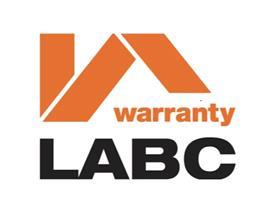
There is often confusion surrounding the relationship between warranties, building control and other insurances, making it difficult to know what is needed and when. Sponsored by LABC Warranty, this module will explore when a warranty comes into play, alongside the implications of housing defects left unchecked
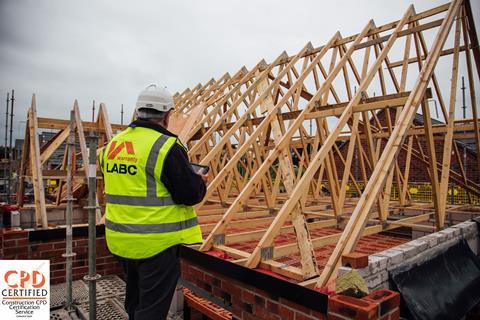
Objectives
- Knowledge of what a warranty is, what it covers and why you need it.
- Awareness of common housing defects, alongside best practice to avoid a potential claim.
- Understanding of when a warranty comes into play.
What is a warranty?
A structural warranty is an insurance policy designed to protect against defects in new buildings, normally for a period of 10 years after completion.
While a structural warranty is purchased by the builder before construction starts, it protects the home owner from structural damage that may occur after completion – providing protection against defects in either workmanship or the risk of failure with construction materials.
The cover provided by a structural warranty varies greatly depending on the chosen provider but can include:
- Deposit protection – should the developer become insolvent during the build, this protects the homeowner’s deposit.
- Defects insurance – leading providers of structural warranties include a defects period for the first one to two years of cover. This provides protection against non-compliance with the warranty provider’s technical manual and may include non-structural issues.
- Structural insurance – this makes up the main part of the warranty and covers against structural issues after the defects period expires.
- Contaminated land – protects against the cost of removing contamination from the housing plot.
A structural warranty is usually split into two periods of time: the defects insurance period and the structural insurance period. The defects insurance period generally covers the first one to two years of a policy and is the time in which the developer is responsible for rectifying any defects (which are deemed to be a failure to comply with the provider’s standards). Any defects observed should be reported to the developer as soon as possible, and copies kept of any correspondence sent.
The structural insurance period follows on from the defects insurance period and generally lasts for eight years. During this time, the structural warranty provider is responsible for dealing directly with valid claims, and the home owner should report any defects directly to their provider. As long as the defect is valid, the provider should then organise any necessary repair work, or pay for such repairs.
The benefits of a warranty
Reputable warranty providers offer much more than an insurance certificate, bringing tangible benefits to projects and helping developers to deliver high-quality homes within the programme. Some warranty providers also provide technical guidance throughout the build to help limit the potential for any problems.
Quality risk management surveyors look beyond the foundations, wall ties and tolerances, taking on a broader commitment to best practices. They take into consideration site tidiness, organisation and even the quality of communication on a site.
In addition, such warranty providers make it as simple as possible to stay on top of inspection findings and actions needed, providing updates on a plot-by-plot, site-by-site basis with the help of a digital customer portal to log and monitor progress. Support systems like this are vital to ensure programme schedules are met.
The support does not end with site completion – quality warranty providers support residents after the handover stage, making them aware of their rights (and responsibilities) under a policy. Advice on running the home, making a claim if necessary, and how to differentiate defects and snags should all be communicated as standard.
In addition, the builder and resident should enjoy the comfort of a dispute resolution service that will go as far as offering alternative accommodation for residents.
These benefits, and more, are why it is important for housebuilders, housing associations and local authorities to seek out a reputable warranty provider. The following checklist can help determine whether you have found a good-quality provider:
- The size of the organisation. Do inspectors and risk management surveyors have local knowledge to back up their technical expertise? Having local or regional representation can also make them more responsive when you have needs and questions about your project.
- How long has the provider been trading? Structural insurance is a niche sector, making it more exposed to market volatility. A more established provider will have built relationships and processes to withstand sudden changes in the market.
- The rating of its insurer. A-rated insurers give you the greatest peace of mind. Larger providers will have a panel of insurers.
- Technical support. Beyond just an understanding of the technical issues you encounter on site, does the provider seek to set, and to raise, wider industry standards in construction?
- What is the offering? Look for insurance policies that meet the specific needs of your developments, as well as providing extras such as cover for contaminated land, debris removal and alternative accommodation.
- At what stage will the provider become involved in a project? Warranty providers that get involved as early as the design stage can offer insight into potential risks for structural defects and building safety issues long before work starts.
Defining a defect
A structural warranty provides building owners with protection from latent defects to the structure of a building. These are defects that occur during the build period but are not discovered until after completion.
A defect is not the same as an issue raised by a building control team, which is detected and remedied by the building control partner. Defects are issues in the construction of a key stage of a home that would eventually turn into a serious problem (compromising the property).
LABC Warranty shared data collected in 2023 by its risk management surveyors while inspecting UK properties against the guidance in its technical manual. The data details the elements on a building most likely to generate a defect.
| Area of the house | Percentage of defects in 2023 |
|---|---|
| External walls | 31% |
| Roofs | 15% |
| Internal walls | 10% |
| Windows and doors | 9% |
| Upper floors | 8% |
| Ground floors | 5% |
| Drainage | 4% |
| Foundations | 3% |
| Electrical services | 2% |
| Ventilation | 2% |
| Driveways and paving | 2% |
| Stairs | 2% |
| Balconies | 1% |
| Heating services | 1% |
| Water services | 1% |
| Basements | 1% |
| Outbuildings | 1% |
| Chimneys | 0% |
| Ground contitions | 0% |
The headline figure is that more than a third of defects in 2023 involved external walls. Roofs came in at half that with 15%, and internal walls offered 10%.
With the lion’s share of faults coming in these areas, it is well worth assessing your knowledge of industry standards on external walls, internal walls and roofs. The following section will further explore the most common elements of a building known to cause defects, detailing regularly seen issues and examples of best practice that could help avoid a potential claim.
Windows and doors
Some of the issues regularly seen during site inspections include:
- Excessive gaps between frame and reveal
- Poor quality timber frames
- Wrong projection of the cill to external brick work
- Poor mastic.
Poorly constructed windows will lead to gaps forming. The first image (above) shows a gap between the opening sash and the frame, which is likely to lead to water ingress and excessive air leakage, causing heat loss. The second image (above) shows a large gap which has been sealed with mastic. This is likely to be a temporary solution as the mastic will deteriorate in time.
As shown in the first image (above), poorly fitted doors within the frame have the potential to cause water ingress and excessive air leakage, leading to heat loss. An area often picked up during inspections is that the window frames are not installed as per their warranty provider’s guidance. The second image (above) shows a cill that does not extend outwards from the brickwork sufficiently. This will lead to the water falling an insufficient distance from the wall, leading to an area below the window being saturated.
External walls
Some of the issues regularly seen during site inspections include:
- Poor bonding
- Incorrect wall tie bedding or positioning
- Poorly installed cavity trays or no cavity trays at all
- Missing weep holes
- Incorrect render application.
The first two images (above) show cavity wall ties that appear to have been pushed into the mortar bed, rather than set into the mortar as the blockwork progresses to achieve the minimum required embedment. Incorrectly installed wall ties will lead to bulging brickwork and possible collapse.
The third image (above) shows a crack in the dwarf wall. It is likely that this dwarf wall has subsided, resulting in the crack. This is confirmed by the orientation of the dwarf wall, being out of level, and also the bearers of the porch itself.
Foundations should be of a suitable depth in order to achieve the satisfactory level of performance. Excavations for foundations should be accurate in line, width and depth, suitable for the type of foundation that forms the basis of the design.
Render is another area that comes under external walls and has the potential to cause issues. The first image (above) shows a patch approximately 1m2 to the left lower region of the front elevation where the render appears to have been washed away. The second image (above) shows the visible backing mesh. This is likely to be a defect in the application or mixing of the render.
As the render coat is part of the waterproof envelope, its correct application is essential for watertightness. Render that has been incorrectly applied, in this case being of insufficient thickness, could lead to water ingress through the external wall. On the site pictured above, weep holes were also missing above openings, which could cause water ingress around the internal window and door reveals.
Roofs
A high-risk area for moisture ingress is roofs. Some of the issues regularly seen during site inspections include:
- Wallplates not bedded
- Tile battens incorrectly installed
- Bracing
- No mechanical fixing of tiles
- No ventilation
- Wet and dry verges.
The first image (above) shows a wall plate that has not been fully bedded onto the blockwork, which means the roofing members are inadequately supported. Any weight from the roof will not be evenly distributed and could cause deformation of the roof.
The second image (above) shows roofing battens that terminate on the same rafter. Roofing battens should terminate in such a way that there is no joint within the next four battens (depending on the gap - if the gap is more than 200mm, joints should be one in four, but three in twelve if the gap is less than 200m). This helps provide lateral stability to the trussed rafters. The roofing underlay should also have a slight drape between rafters. This ensures that any wind-driven rain that manages to get beyond the roofing tiles will run down to the guttering via the underlay. If no drape is provided, then water could be trapped behind the battens, eventually causing them to rot.
Intermediate floors
Some of the issues regularly seen during site inspections include:
- Unlevel flooring
- Poor glueing and fixing of floor coverings
- Floor coverings butted too tight to the internal wall
- Joists set out incorrectly
- Joist end bearings.
In the first image (above), the projection into the cavity is too great. This could lead to the joist ends rotting due to water ingress. It would also lead to the incorrect installation of cavity insulation. In the second image (above), the joists are set out incorrectly and insufficient bearings could lead to excessive movements of the joists and cracked ceilings.
Internal walls
Some of the issues regularly seen during site inspections include:
- Poorly constructed
- Wrong bonding
- Missing vertical damp-proof courses (DPC)
- Spandrel panels poorly installed
- Poor conditions of materials.
The first two images (above) demonstrate structural issues that could lead to cracking, such as an excessive load on a narrow pier (as seen in the first image). The second image shows stack bonding of blockwork, which means any load on the wall will not be evenly distributed and could cause cracking. A missing vertical damp-proof course (DPC) will lead to water ingress.
The third image (above) is not a claim but an area where issues are often seen on site. The first rafter is set out too close to the spandrel panel. It should be set 25mm-75mm away. The cover strip should be continuous, not cut around the rafter, and restraint straps are missing. Lack of restraint could lead to movement of the spandrel panel, and a cover strip that does not continue will likely mean the spandrel panel will not provide 60 minutes of fire resistance between dwellings.
What good workmanship looks like
The gallery below demonstrates examples of good workmanship.
When a project comes together, a good warranty provider will offer extensive technical support throughout the development process to ensure builders and building designers meet the required technical standards. A collaborative approach is strongly advised to achieve high-quality new homes and avoid any potential claims.
Please fill out the form below to complete the module and receive your certificate:
















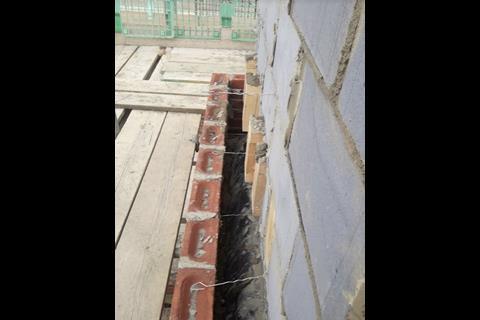
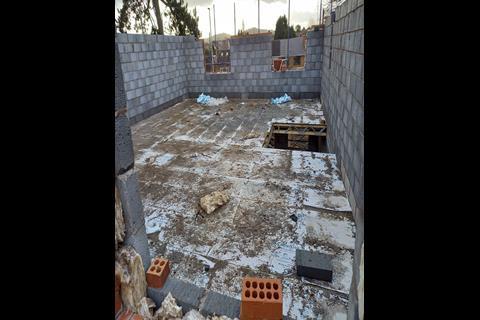









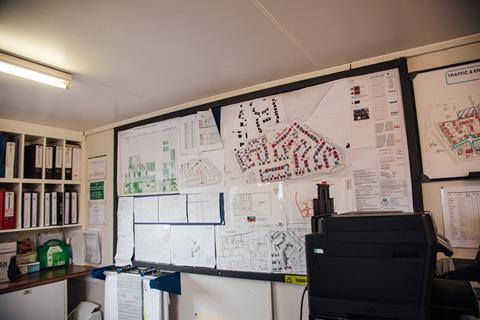









No comments yet